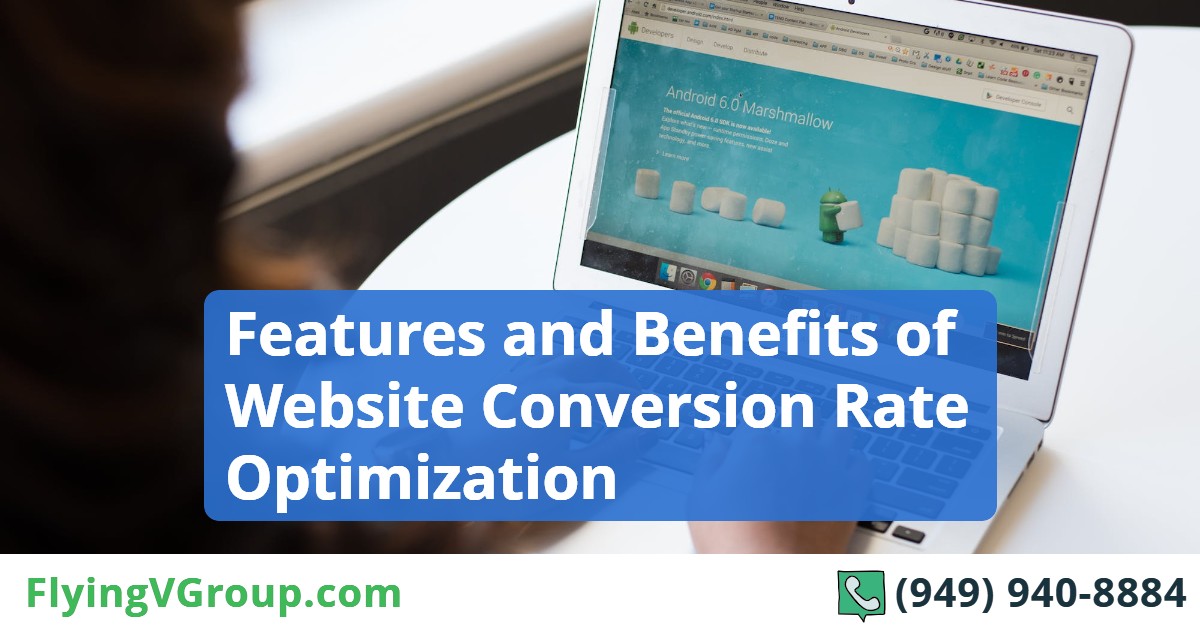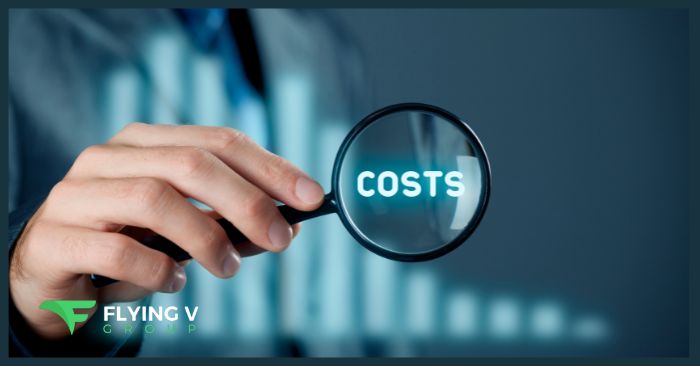Conversion optimization or conversion rate optimization (CRO) is the process of optimizing and increasing the percentage of visitors to your website who undertake some sort of desired action like filling out a form, purchasing something, or agreeing to be a customer, among other things. The entire CRO cycle deals with developing a better understanding of how a visitor moves through your site, what actions they take, and what roadblocks they encounter that prevent them from performing the desired action.
A conversion in simple terms means that the visitor to the site completes the goal or goals of the site. It is important to understand that this goal can take on many different forms and types.
For example, if you have built a website around selling products, the primary goal (known as the macro-conversion) for the site would be to ensure that the visitor purchases something from the site. Then there is a micro conversion which may happen, such as the customer signing up to receive e-mails from the site before making a final purchase decision.
Examples of Conversions:
Macro-Conversions:
- A visitor purchasing something from your site.
- A quote request by the customer.
- Agreeing to subscribe to a service.
Micro-Conversions:
- Signing up for the organizations newsletter.
- Account creation by the visitor.
- Selecting products and adding them to the cart.
How Do I Calculate a Website’s Conversion Rate?
To calculate the conversion rate of a website, you will need to follow the next two steps:
- Find out the number of times a specific goal is completed.
- Then divide it by the number of visitors to your site.
If a user converts on each visit and buys something from your site, then in order to find the conversation rate, you need to divide the conversion by the number of unique visits to your site.
If you are in the business of selling subscriptions, then conversion rate is calculated by dividing the number of conversions by the number of users.
Conversion Rate Scenarios Explained
Imagine a person owning an e-commerce site— let’s call it Salety. There is a possibility that the visitor buys something on every visit. The website owner would naturally like to optimize the website so that the purchases are maximized. If a person is visiting the website three times a day, it translates into three sessions and three opportunities to convert subsequently. Let us simulate a hypothetical situation to determine how the three sessions were played out.
Session 1 — unfortunately no conversion took place. On the users first visit they were just trying to familiarize themselves with the site and gauge its content.
Session 2 — the user purchased a pair of comfortable running shoes. This is a conversion.
Session 3 — the visitor was impressed by the website’s quality and the price at which they got those pair of shoes. The user decides to come back and buy a sweatshirt—another conversion. However, it is important to note that it will count as a single conversion since the same visitor has bought two different items.
To calculate the conversion rate we need to take into account the number of unique purchase orders and then divide it by the total number of sessions.
For example, the visitor used in the previous example visited the website three times and bought products twice.
Conversion rate: 2 orders/3 sessions x 100 which equals 66 percent.
Calculation of Conversion Rate by Sessions
If the number of unique orders is 600 and the total number of sessions is 6,000 then:
Conversion rate: 600/6000 x 100 which = 10 percent.
Situation in which the User Converts Only Once
Let us look at another example of another e-commerce site – Salesforcy. The site is in the business of selling monthly subscriptions for plant seeds. A visitor over the course of a month can visit the site multiple times, but he will not be buying anything as he has already bought the monthly subscription once.
As in the previous example, let us simulate a hypothetical situation to determine how the three sessions were played out.
Session 1 — the user came to the site just to familiarize themselves with the website and its offerings. No conversions took place.
Session 2 — the user, satisfied with the website, visits the site again and purchases a monthly subscription plan for plant seeds.
Session 3 — the user comes back again, but only to find out more or read blog articles.
It is pretty obvious here that the user will not be buying something every time he visits. In this instance, looking at the number of sessions will not serve our purpose so we will need to measure conversion success by the number of visitors:
Number of unique orders = 1
Number of unique visitors =1
Conversion rate: 1 order/1 unique visitor x 100 = 100 percent
Calculation of Conversion Rate by Unique Users
Let us say, for example, the number of unique orders is 500 and the number of unique visitors is 1,500.
The conversion rate, as such, would be 500/1,500 x 100 = 33.33 percent
How Conversion rate optimization is beneficial for SEO
It is important to understand that CRO cannot be directly related to driving organic traffic to the website or improving ranking results returned by search engine (SERP). However, there are many other ways in which CRO can boost your SEO efforts. Here are some of the ways:
CRO Offers Better Insights into Consumer Behavior
Conversion rate optimization can help you identify your target audience, but more importantly the type of communication (what, when, how, where, etc) that will appeal to them the most. Conversion rate optimization, in other words, helps your business grow by pointing out the right target audience for you and how your website should be designed around them.
The word you need to pay attention to here is ‘right’ as your cause is unlikely to be served the way you desire if the audience that comes to your site is not interested in your offerings. For example, if you sell winter wears, a visit from a person from tropical regions is most likely to not result in a conversion.
Better Return on Investment
Better Scalability
There is a possibility that your audience size may not keep up with your business growth rate, but CRO aids in your growth without any worries of your business running out of either customers or resources. Your customers are not infinite. CRO helps you convert the same set of customers who repeatedly visit your site into buyers and brand loyalists.
Enhanced User Experience
Conversion Rate Optimization (CRO) is all about identifying what is most likely to click with your target audience. Identification of the right metrics and working on optimization for that audience will enable you to engage more closely with your target customers which will generate additional loyalty from them.
Higher Level of Trust
The purpose of your site is to sell your offerings. People are only going to buy from your site if they trust your site and are comfortable enough to share their personal details, credit information, etc. with you. Remember that your website’s goal is to take the leading initiative when it comes to promoting your sales. Just like an internal sales team, your site should be polite, interactive, and answer any visitor’s questions and concerns in a professional and courteous manner.
How to Optimize Your Conversion Rate?
The Analytics Method
This method, also known as quantitative data analysis, presents you with facts and numbers, which gives you a clear idea of how people are behaving after visiting your site. Use of tools like Google Analytics can give you a fair idea of how users engage with your site i.e. how they reached your website, where they landed, where they spend the maximum time, etc.
The People Method
This method also known as, qualitative data analysis, deals with the ‘why’ of your visitors behavior. You can get this data through the following methods:
- User testing
- On-site surveys
- Satisfaction surveys
The Bad Conversion Rate Optimization Method
As the name suggests, some ineffective CRO methods include:
- Decisions based on hunches, gut feelings, and guesswork.
- Doing it for the sake of doing. You make changes because your competitor is making changes without understanding the reason behind it.
- Executing changes based on the opinion of the person who happens to be the highest payer.
Correct gathering and analysis of data is of paramount importance to derive meaningful insights. Shooting random arrows in the dark hoping that some will strike something is not the right way to proceed when it comes to Conversion Rate Optimization.
Be sure to use the above methods of optimization and consider what your CUSTOMER is looking for on your website.





0 Comments